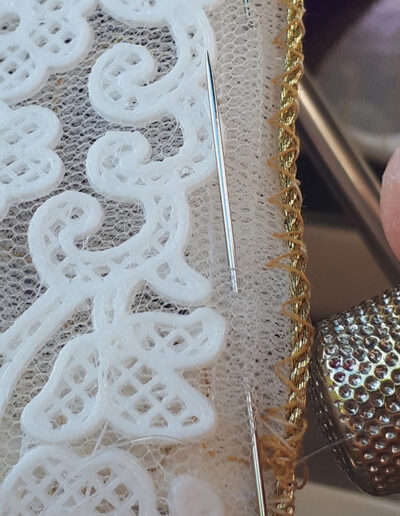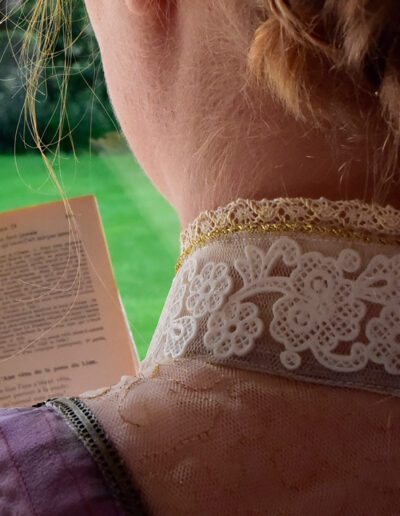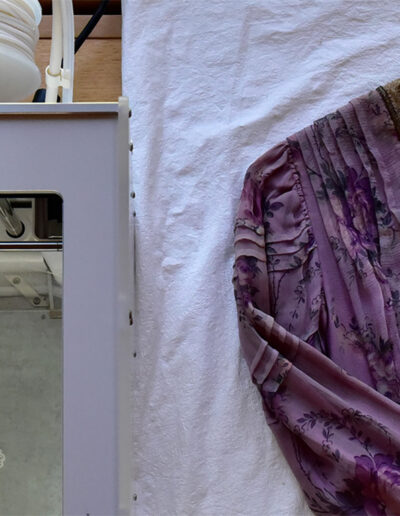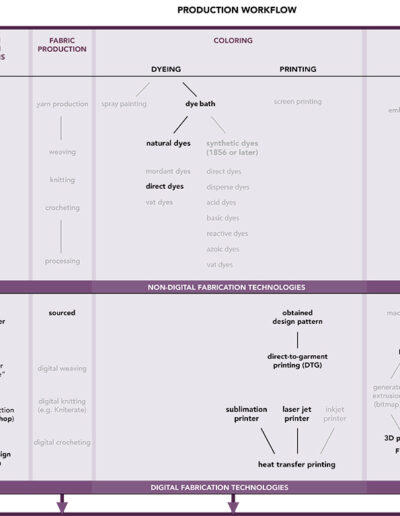Towards a methodology to design smart replicas of historical garments
Tine Vande Verre
Master Productontwikkeling
2019 — 2020
ontwerp
promotoren
Paul Bailleul
Jouke Verlinden
medestudenten
Mariella De Vos
Natalie Ortega Saez
TOWARDS A METHODOLOGY TO DESIGN SMART REPLICAS OF HISTORICAL GARMENTS
About 95% of historical garments are locked away in museums’ storage depots. Even when they are accessible it is often solely as visual input, excluding all other senses. As recent advancements in digital fabrication technologies have enabled the creation of a smart replica, the question on how to combine traditional and high-tech technologies to create such a new autonomous object has risen.
Research through design was conducted in order to establish the foundations for a methodology for designing smart replicas of historical garments. The 19th century corsage of the collection Chris d’Hondt was chosen as a case as it contains a broad range of different production techniques. The selection of fabrication technologies was based on visual and tactile similarity as well as washability. An example of an implemented digital fabrication technology is 3D printing on tulle, which was used to replicate the lace. Although the aim was to map a replication workflow which could be applied to a variety of historical garments, this proved to be difficult due to the diversity of historical garments as well as the diversity in application contexts for the smart replica. However, the researched methodology does apply to corsages of the 1900s aiming to provide a multisensorial experience and can serve as a starting point for other types of garments or application contexts, such as theatre and film.




